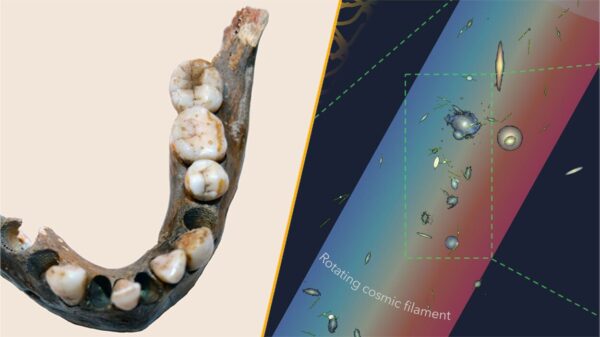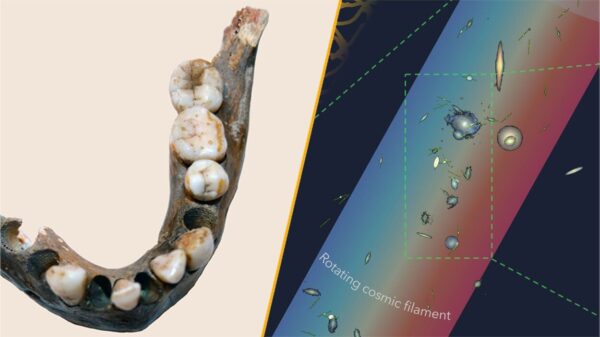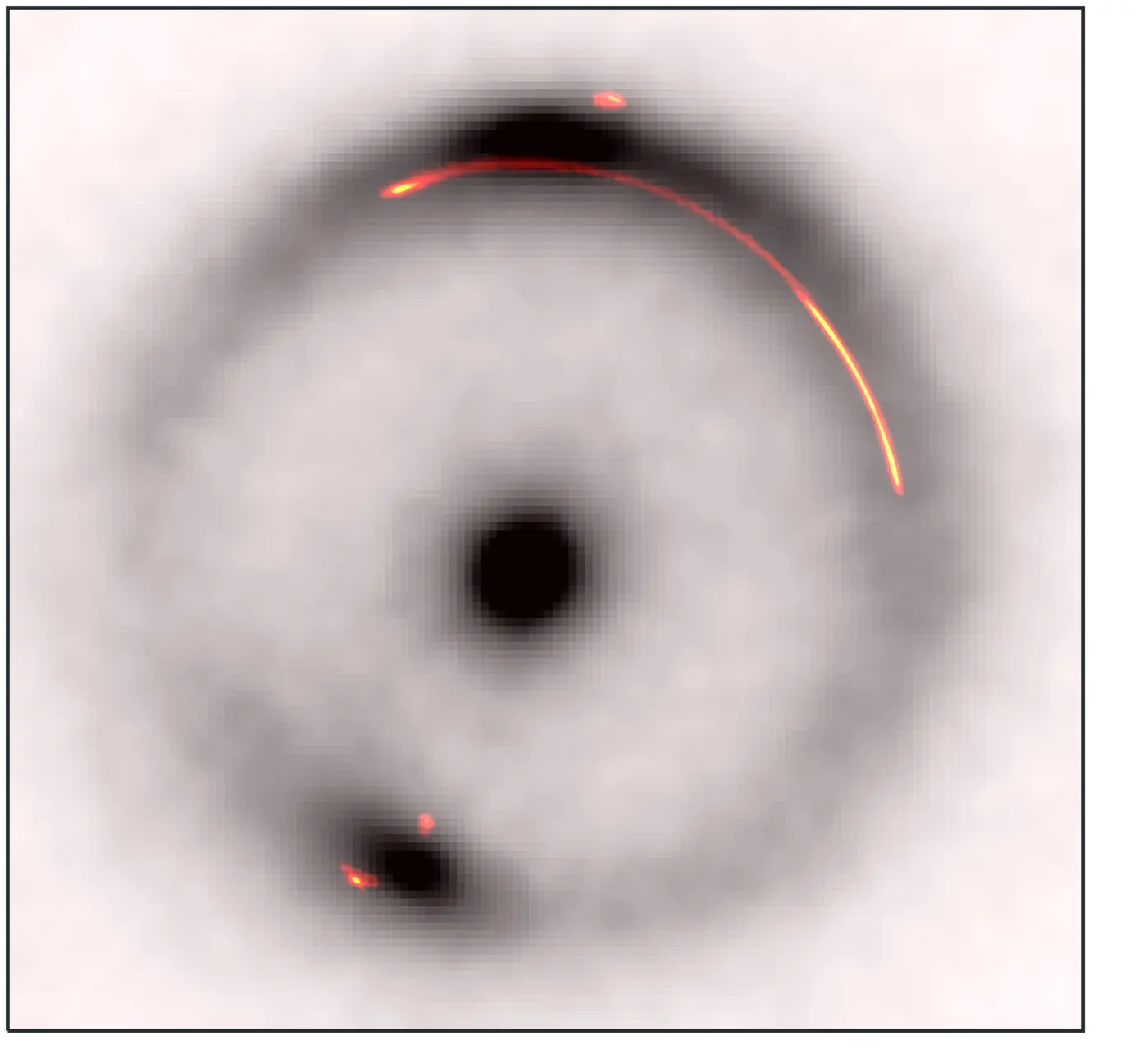Astronomers have successfully identified the smallest clump of dark matter ever detected, a significant advancement in understanding this elusive substance that constitutes approximately 85% of the universe’s matter. Led by Dr. Devon Powell from the Max Planck Institute for Astrophysics, the international research team located this dark matter clump roughly 10 billion light years away, in a region of space that existed when the universe was only 6.5 billion years old.
To achieve this remarkable feat, the team utilized an innovative approach that involved creating an Earth-sized telescope by coordinating various radio observatories worldwide. The Green Bank Telescope in West Virginia, United States, played a pivotal role. This facility is noted for being the world’s largest fully steerable radio telescope, featuring a dish measuring 100 by 110 meters.
The discovery hinged on the phenomenon of gravitational lensing, a concept first predicted by Einstein’s Theory of General Relativity. This theory explains how massive objects can warp the fabric of spacetime, thus altering the path of light from objects behind them. When the team examined a system designated B1938+666, they noticed an unusual “pinch” in the gravitational arc formed by this lensing effect. This distortion signaled the presence of an additional clump of unseen mass situated between the Earth and the background galaxy.
Dr. Powell’s team published their findings in Nature Astronomy, detailing their methodology of employing distant galaxies as “backlights” to uncover the gravitational signatures of dark matter. This process is analogous to detecting an invisible object by observing how it distorts the images behind it. They faced the challenge of analyzing vast datasets, which necessitated the development of new computational methods capable of running on supercomputers.
The team implemented a technique known as gravitational imaging to effectively capture the effects of the invisible object. In their analysis, a zoomed-in view revealed the “pinch” in the luminous radio arc, indicating the presence of extra mass. Notably, no light from the dark matter clump has yet been detected across optical, infrared, or radio wavelengths.
This groundbreaking discovery has implications for our understanding of galaxy formation. There has long been debate over the distribution of dark matter—whether it exists in a smooth manner or in discrete clumps. The detection of this small concentration of dark matter supports the cold dark matter theory, which posits that dark matter consists of slow-moving particles that began clumping together through gravitational attraction in the early universe. These particles, classified as “cold,” moved slowly enough to form structures that ultimately merged into galaxies and galaxy clusters.
Having located this dark matter clump, researchers are now faced with the question of whether they can find more similar concentrations and whether their findings will align with theoretical predictions. If additional clumps are discovered across various regions of the universe, it may necessitate revisions to existing theories regarding the fundamental nature of dark matter. Until then, the quest to unravel the mysteries of dark matter continues.





































































